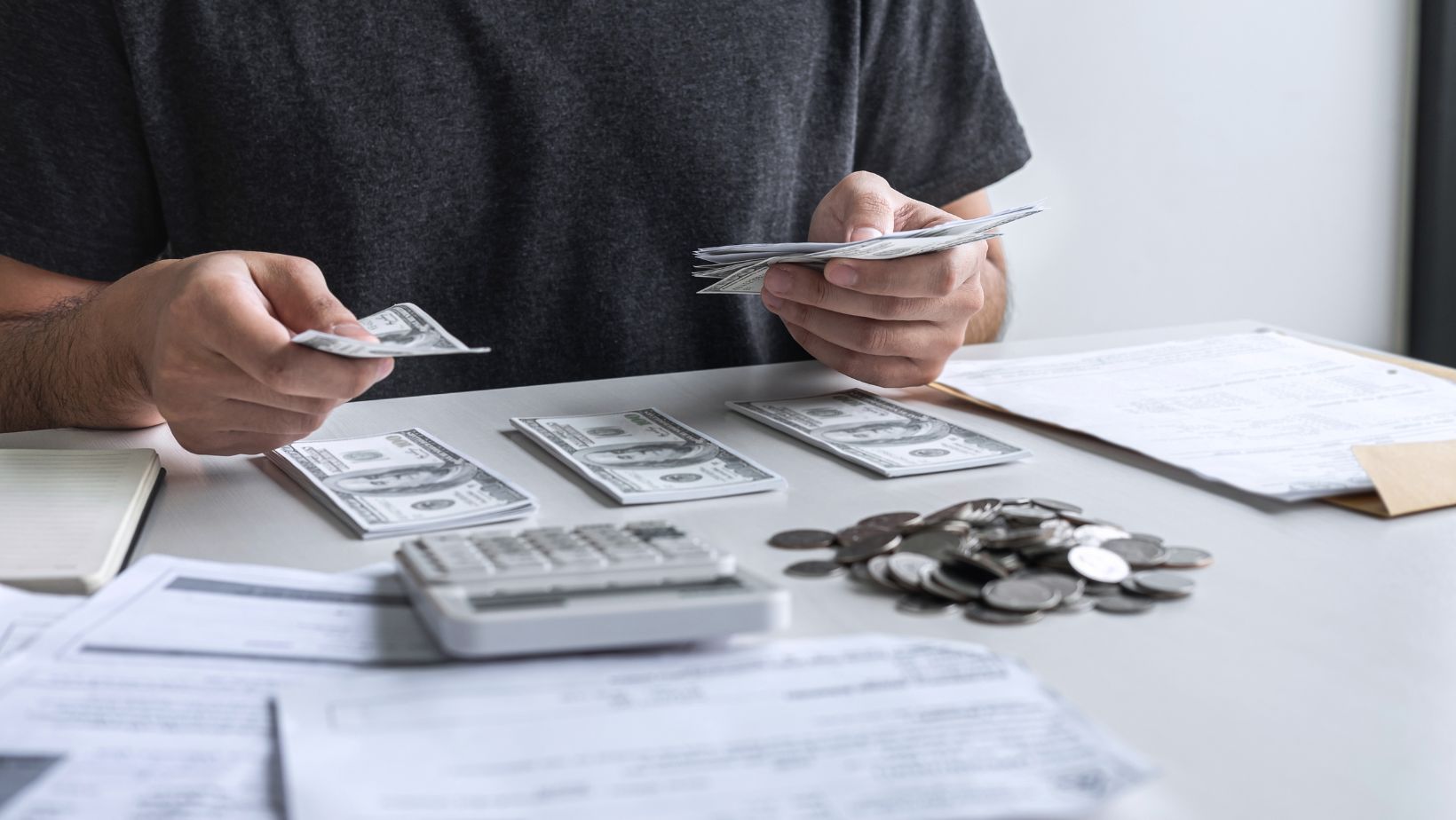Introduction:
Living paycheck to paycheck can feel like being stuck in a financial loop you can’t escape. The bills arrive, the paycheck hits your account, and by the end of the week, most of it is already gone. This constant cycle creates stress, limits your choices, and can make long-term planning seem impossible. For many, it’s not a matter of poor money management—it’s the result of rising costs, stagnant wages, and unexpected life events.
But no matter how tight things are right now, there are steps you can take to regain control over your finances and start building some breathing room. The key is to be intentional, honest about your habits, and willing to make changes—one small shift at a time. This guide is designed to help you break free from the paycheck-to-paycheck grind and build a more secure financial future, starting with where you are today. For those looking for a bit of fun along the way, you can explore entertainment options like betboo güncel giriş, which offers an engaging gaming experience while also encouraging responsible financial management.
Analyze Your Current Financial Situation In Detail And Without Judgment:
The first step toward financial stability is understanding where your money is actually going. Many people underestimate how much they spend on small, recurring expenses or fail to realize just how much debt or fixed bills are weighing them down. To move forward, you need to get brutally honest with your numbers.
Start by tracking every dollar you earn and spend for a full month. Write it all down, or use a budgeting app that categorizes your spending. Once everything is visible, look for patterns. How much is going toward essentials, and how much is leaking into things that don’t serve your financial goals? This clarity is the foundation for smarter money choices and will guide every other step in your financial journey.
Create A Bare-Bones Budget That Prioritizes Your Financial Stability:
MasterMindSEO: When you’re living paycheck to paycheck, you don’t need a complicated budget—you need a clear one that prioritizes survival, savings, and debt reduction. This is where a bare-bones budget comes in. It’s a no-frills spending plan that focuses only on essential expenses, so you can free up cash and stop relying on your next paycheck to survive.
List all your absolutely necessary monthly expenses, including rent, utilities, groceries, transportation, and minimum debt payments. Eliminate or pause any non-essential spending, at least temporarily. From there, allocate your remaining income to savings or debt payoff goals. As tough as it may be to trim back, this temporary sacrifice helps you create a little room to breathe and eventually escape the paycheck-to-paycheck cycle.
Find Ways To Reduce Or Renegotiate Your Fixed Expenses:
When money is tight, cutting back on Netflix or morning coffee can help, but it won’t always move the needle. To create meaningful savings, focus on your largest fixed expenses—housing, insurance, transportation, and utilities. These are often negotiable or at least adjustable if you’re willing to explore alternatives.

Call your internet or phone provider to negotiate a lower rate or look for discounts or promotional plans. Consider getting a roommate to lower your housing costs or switching to a more affordable car. Even small changes, like switching insurance providers or reducing your thermostat use, can add up. Look at every recurring bill and ask: Can I lower this, pause it, or replace it with something cheaper?
Key areas to review:
- Rent or mortgage (roommates, downsizing)
- Car payments or insurance
- Utility bills (budget plans or energy audits)
- Subscriptions (cancel or downgrade plans)
- Credit card interest rates (negotiate or transfer balances)
Explore Reliable Methods To Supplement Your Paycheck:
Sometimes, the best way to escape from paycheck to paycheck is not just cutting costs but boosting your income. There are many quick income methods that don’t require a major career change or full-time commitment. These include freelance gigs, delivery driving, online tutoring, selling unused items, or starting a small service business on the side.
Some Canadians have even found success flipping personalized number plates, which can be surprisingly valuable depending on demand and uniqueness. Others have recently explored digital assets and short-term trading to increase income. Some platforms offer secure ways to buy and sell digital currencies through trusted exchanges. While not guaranteed income, for those who educate themselves, these can become viable additions to their income strategy. Like any side hustle, make sure to assess your time, skills, and risk tolerance before jumping in.
Use Tools And Technology To Protect Yourself From Financial Risks:
Many people overlook the role that digital tools can play in protecting their financial health. Just like companies use systems to manage operational risk, individuals can use apps and software to track their money, avoid fees, automate savings, and minimize risk.
For example, certain apps allow you to receive spending alerts, track credit score changes, or automatically transfer money into savings. This makes it easier to build healthy financial habits without needing constant attention. In the same way that businesses use fire risk assessment software to reduce hazards, individuals can use budgeting and financial planning tools to proactively avoid financial emergencies. When you start thinking like a risk manager, you prevent small issues from becoming major setbacks.
Build A Starter Emergency Fund Even If It Seems Impossible:
When you’re barely covering your bills, the idea of saving money might feel laughable—but even $10 or $25 per paycheck can make a difference. A small emergency fund acts as a buffer, so when life throws an unexpected expense your way, you’re not forced to rely on credit cards or payday loans.
Start by setting a mini goal: $500 or $1000. Keep the money in a separate account that’s easy to access in emergencies but not linked to your everyday spending. Automate your contributions, even if it’s just a few dollars at a time. With consistency, this habit will become part of your routine and protect your progress when life happens.
Look For Trusted Platforms If Exploring Digital Assets:
If you’re financially stable enough to explore investing, digital assets can offer a new avenue for long-term growth. But just like any investment, you need to use platforms that are secure, regulated, and trusted—especially in a space like cryptocurrency. For Canadians, using a Canadian crypto exchange ensures that your transactions are compliant with Canadian laws and that your digital assets are stored securely.
These platforms offer tools to buy, sell, and track performance in real-time, making them ideal for beginners and experienced users alike. Still, crypto should only be a small portion of your investment plan and never come before your emergency fund or debt reduction. Approach it with caution, strategy, and a long-term mindset.
Understand Banking Tools And Credit Options To Avoid Hidden Pitfalls:
When you’re working to stabilize your finances, it’s important to understand the tools and products offered by banks and credit institutions. Not all financial products are created equal, and some can actually hurt your financial progress if misused. Knowing how credit cards, checking accounts, and personal loans work gives you the power to make smart decisions and avoid hidden fees, penalties, or high interest rates.

For example, many people sign up for credit cards without fully understanding terms like APR, grace periods, or minimum payments. Even the physical design of credit cards can vary depending on the issuer or country. If you’re planning to shop internationally or compare options across platforms, knowing details like standard credit card dimensions can be helpful when selecting compatible wallets, accessories, or mobile payment setups. Always take time to read the fine print, compare offers, and choose the financial tools that align with your long-term goals rather than quick fixes.
Rebuild Your Relationship With Money And Create Better Long-Term Habits:
Living paycheck to paycheck often causes shame, stress, and avoidance. That emotional strain makes it even harder to take action. But to truly move forward, you have to rebuild how you think about and interact with money. It’s not just about making more or spending less—it’s about changing your mindset.
Start by practicing gratitude for what you already have, and focus on progress instead of perfection. Celebrate small wins like sticking to your budget, saving $50, or saying no to an impulse buy. These tiny victories build momentum. Eventually, you’ll shift from reactive financial behavior to proactive control—and that’s when lasting change happens.
Stop Relying On Credit Cards To Cover Everyday Expenses:
One of the warning signs of living paycheck to paycheck is using credit cards to pay for everyday items like groceries, gas, or utility bills—not for points or convenience, but because your paycheck doesn’t stretch far enough. This kind of dependency can quietly spiral into debt that becomes difficult to manage. Interest accumulates quickly, and soon, you’re paying more in finance charges than the cost of the original purchases.
To break this cycle, create a clear separation between your spending and borrowing. Try to pay for daily expenses with your debit card or cash to stay within your actual income. If you do use a credit card, treat it like a short-term loan and pay it off in full each month. Consider temporarily putting your cards away while you rebuild your budget. Your goal should be to use credit cards as a tool—not a crutch.
Set Financial Boundaries With Yourself And Others:
We Buy Houses in Kentucky: Financial boundaries are crucial when you’re trying to gain control over your money. Whether it’s saying no to expensive social plans, refusing to lend money to friends, or cutting back on family obligations that drain your wallet, boundaries protect your progress. Many people feel guilty about setting limits, but remember—protecting your financial well-being is not selfish; it’s responsible.
Create a set of guidelines for what you will and won’t spend on, who you’ll support financially (if anyone), and how you’ll handle requests that don’t align with your budget. It’s okay to say, “I can’t afford that right now,” or “That’s not in my plan this month.” The more confident and consistent you are in enforcing those boundaries, the easier it becomes to stay focused on your own goals and build lasting financial resilience.
Build A Vision Board Or Visual Roadmap For Financial Motivation:
It’s easy to get discouraged when you’re stuck in a paycheck-to-paycheck cycle. That’s why visual motivation can play such an important role. A financial vision board helps you stay focused on why you’re making sacrifices and what you’re working toward. Whether it’s becoming debt-free, taking a vacation, building an emergency fund, or buying a home, visualizing your goals can keep you inspired.
Use magazines, digital templates, sticky notes, or a Pinterest board to create a collection of images and words that reflect your money goals. Place it somewhere you’ll see daily—on your fridge, laptop, or wall. As you make progress, update your board with milestones achieved. It becomes a physical reminder that even if things feel tight now, you’re building toward something better. And that kind of motivation can be the spark that keeps you going.
Conclusion:
Living paycheck to paycheck may feel permanent, but it doesn’t have to be. With honest tracking, intentional budgeting, smart income strategies, and the use of modern tools, you can begin building the habits and structure needed to break free from the cycle. You don’t need to be perfect—you just need to start.
The key is to act now, not later. The longer you delay, the more difficult it becomes to shift your financial direction. Take one small step today. Whether it’s canceling a subscription, making a $25 transfer to savings, or finding a quick side gig, that first action is your way out. The road to stability, peace of mind, and financial freedom starts with where you are right now.
